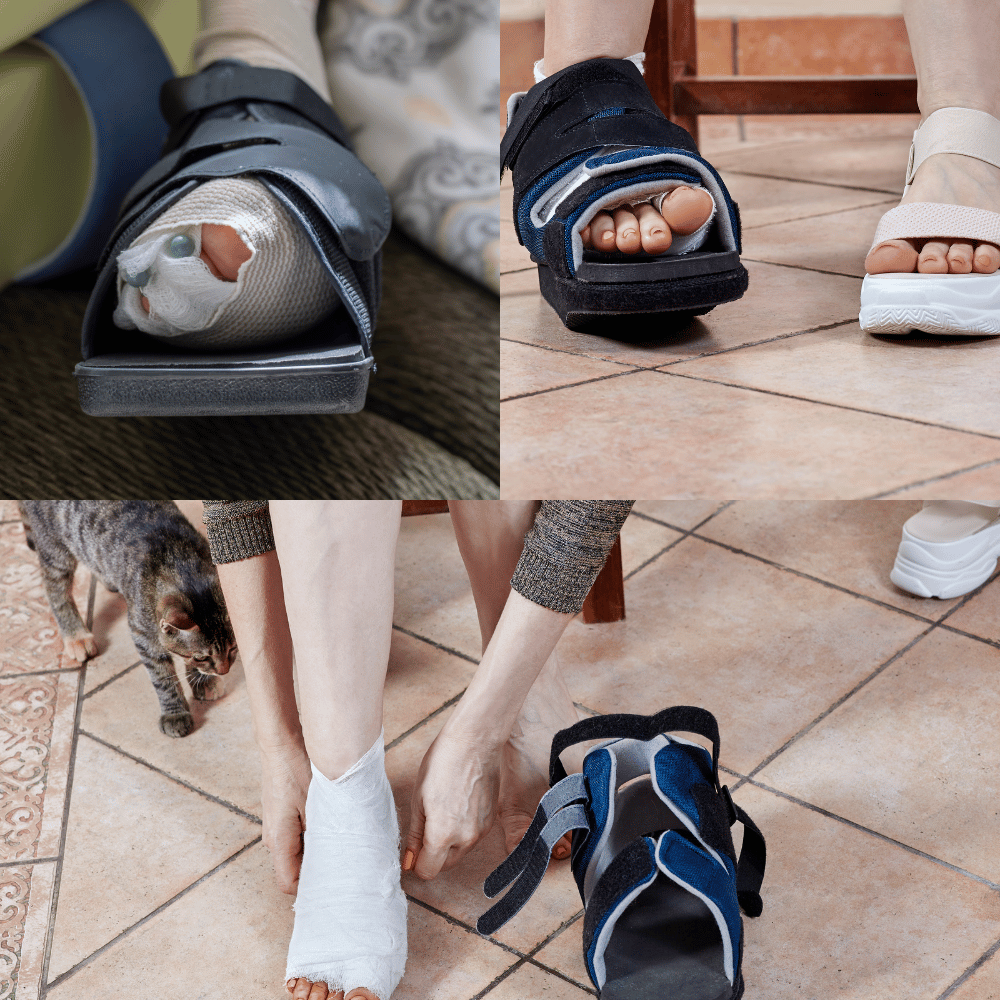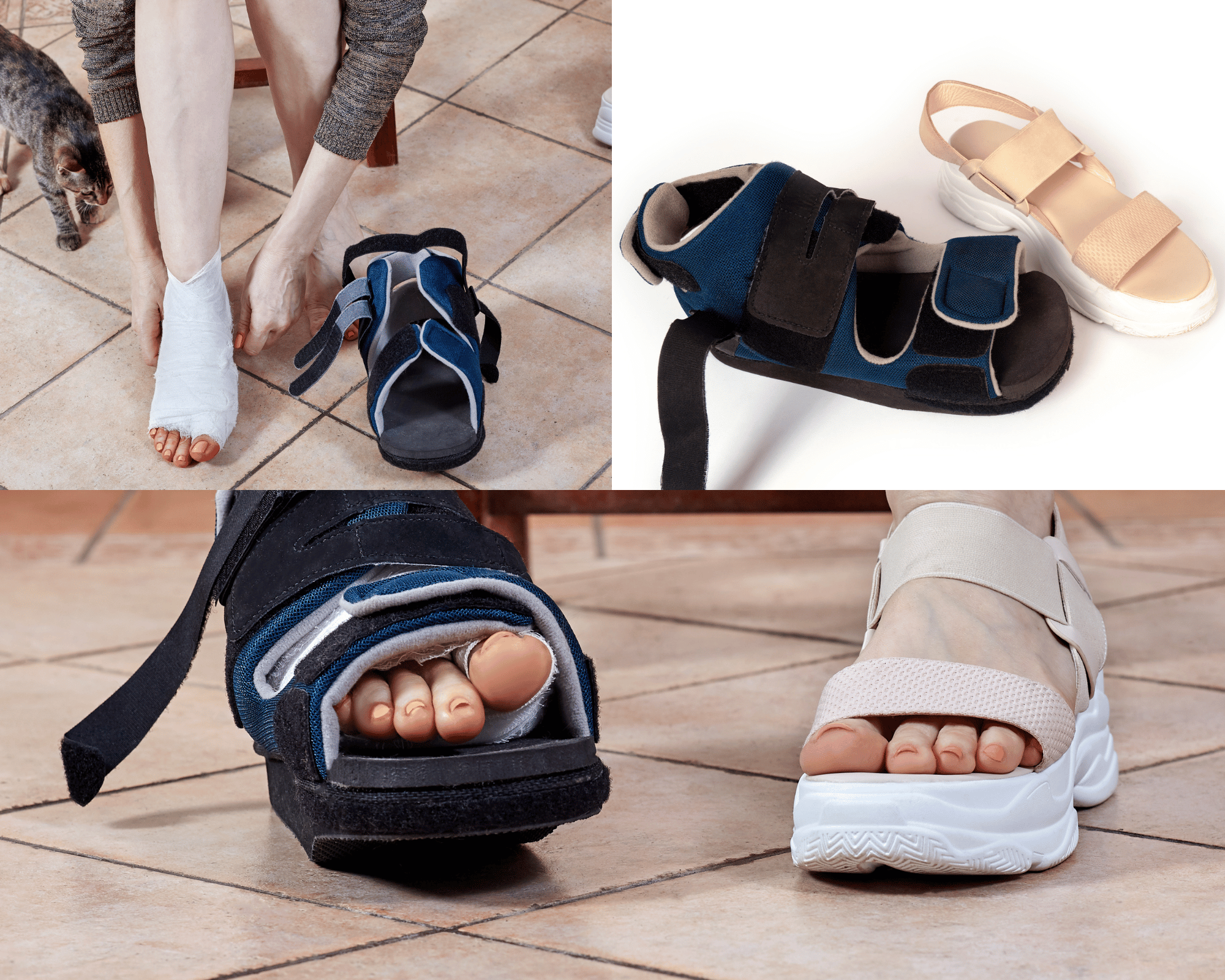Bunion surgery can be a significant relief for those who have suffered from the pain and discomfort caused by bunions. However, the recovery process is crucial, and selecting the right footwear is a vital part of it. This comprehensive guide will help you understand what to look for in shoes after bunion surgery to ensure comfort and support during your healing journey.
Key Takeaways:
- Post-surgery shoes should have a wide toe box to prevent pressure on the healing area.
- Orthopedic shoes can offer the necessary support and comfort needed after bunion surgery.
- Arch support shoes are essential to maintain proper foot alignment and aid in recovery.
Importance of Proper Footwear Post-Surgery
After bunion surgery, your foot will be in a delicate state, requiring shoes that can accommodate swelling and provide comfort. The right shoes will not only ease your recovery but also help prevent the recurrence of bunions. It's essential to choose footwear that offers support and does not put any unnecessary pressure on your toes.
Features of the Ideal Post-Surgery Shoe
When shopping for post-surgery shoes, look for a wide toe box that allows your toes to spread out without constriction. This feature is crucial in preventing pressure on the sensitive surgical site. Additionally, shoes with adjustable straps or laces can accommodate changes in foot size due to swelling.
Wide Toe Box Shoes: A Must-Have
Wide toe box shoes are non-negotiable after bunion surgery. They provide ample room for your toes, reducing the risk of irritation and aiding in the healing process. Look for shoes specifically designed with a wider front to ensure your comfort and protection.
How to Identify Shoes with a Wide Toe Box
To identify shoes with a wide toe box, supportive footwear, check the shape of the shoe front. It should be rounded or square, not pointed. You can also press on the toe area to see if there is additional space around the sides and top of the toes.
The Benefits of Orthopedic Shoes
Orthopedic shoes are designed with foot health in mind. They often come with features like contoured footbeds and extra cushioning that can be particularly beneficial after bunion surgery. These shoes can help in evenly distributing your weight and reducing stress on your feet.
Selecting the Right Orthopedic Shoes
When selecting orthopedic shoes, ensure they have a firm sole to provide stability and a soft insole for comfort. It's also helpful if the shoes are made from breathable materials to keep your feet dry and reduce the risk of infection.
Arch Support Shoes for Enhanced Recovery
Arch support shoes are vital for maintaining proper foot alignment, which is especially important after bunion surgery. They can help in minimizing strain on the foot and provide a stable base for walking.
Finding the Perfect Arch Support Shoes
Look for shoes that have a well-defined arch area that matches the contour of your foot. This support should feel comfortable and not too intrusive. Shoes with removable insoles may also allow you to customize the level of arch support you need.
The Role of Adjustable Footwear best shoes product features for after bunion surgery
Adjustable footwear, such as shoes with Velcro straps or laces, supportive shoes can be incredibly beneficial post-surgery. They allow you to loosen or tighten your shoes based on swelling and ensure a snug fit without putting pressure on the bunion area.
Tips for Adjusting Your Shoes Post-Surgery
When adjusting your shoes, start with them looser than you think you need. As swelling decreases, you can gradually tighten them. Always prioritize comfort over aesthetics during the recovery period.
Material Matters: Choosing the Right Fabric
The material of your post-surgery shoes can make a significant difference in your comfort level. Soft, flexible materials like leather or canvas can accommodate swelling and provide gentle support without irritating the skin.
Why Breathable Materials Are Essential
Breathable materials help to keep your feet cool and dry, reducing the risk of infection and promoting healing. Look for shoes with mesh panels or made from natural fibers that allow air circulation.
The Importance of Non-Slip Soles wear shoes
Non-slip soles are crucial for safety after bunion surgery. They provide traction and prevent falls, which is essential when your mobility may be compromised during recovery.
How to Test for Non-Slip Soles dress shoes
When shopping for shoes, leather shoes, heel support, walking shoes, test the soles by pressing them against a smooth surface to check their grip. Shoes with textured or rubber soles typically offer better traction.
Transitioning to Regular Shoes
As you recover, you'll eventually transition back to regular shoes. Start with shoes that have similar features to your post-surgery footwear, promote proper foot alignment, foot pain, rounded toe shape big toe joint such as a wide toe box and arch support, to ease the transition.
Signs You're Ready for Regular Shoes
You'll know you're ready to transition to regular shoes when you can walk comfortably without swelling and have received approval from your doctor. Always prioritize comfort and support over style.
Where to Buy Post-Surgery Shoes
Specialty stores and online retailers often have a wide selection of shoes suitable for post-surgery recovery. Look for stores that offer free returns or exchanges, as you may need to try several pairs before finding the perfect fit.
Consulting with a Podiatrist
Before making a purchase, consider consulting with a podiatrist. They can provide recommendations based on your specific needs and may even suggest custom orthotics for your shoes.
Summary
Choosing the right shoes after bunion surgery is critical for a comfortable and successful recovery. Wide toe box shoes, orthopedic shoes, and arch support shoes are all excellent options that provide the necessary support and space for your feet to heal. Remember to look for adjustable features, breathable materials, flat shoes, wear normal shoes best shoes, and non-slip soles to ensure safety and comfort. As you transition back to regular shoes, continue to prioritize support and fit over style.
FAQ Section
Q: How soon after bunion surgery can I wear regular shoes?
A: The timeline for wearing regular shoes varies depending on the individual's recovery. It's essential to follow your doctor's advice and only transition when you can walk comfortably without swelling.
Q: Can I wear high heels after bunion surgery?
A: High heels can put pressure on the front of the foot and should be avoided during the recovery period. Discuss with your doctor when it might be safe to reintroduce heels into your wardrobe.
Q: Are custom orthotics necessary after bunion surgery?
A: Custom orthotics are not always necessary but can provide additional support and comfort. Consult with a podiatrist to determine if they would be beneficial for your recovery.









